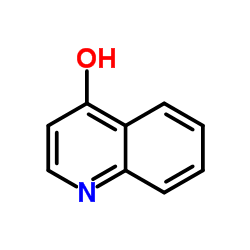Difference in brain distributions of carbon 11-labeled 4-hydroxy-2(1H)-quinolones as PET radioligands for the glycine-binding site of the NMDA ion channel.
Takeshi Fuchigami, Terushi Haradahira, Noriko Fujimoto, Takashi Okauchi, Jun Maeda, Kazutoshi Suzuki, Tetsuya Suhara, Fumihiko Yamamoto, Shigeki Sasaki, Takahiro Mukai, Hiroshi Yamaguchi, Mikako Ogawa, Yasuhiro Magata, Minoru Maeda
Index: Nucl. Med. Biol. 35(2) , 203-12, (2008)
Full Text: HTML
Abstract
High-affinity iodine- and ethyl-C-5 substituted analogs of 4-hydroxy-3-(3-[11C]methoxyphenyl)-2(1H)-quinolone ([11C]4HQ) were synthesized as new positron emission tomography radioligands for the glycine-binding sites of the N-methyl-d-aspartate (NMDA) ion channel. Although both radioligands showed high in vitro specific binding to rat brain slices, their binding characteristics were quite different from each other. 5-Ethyl-[11C]4HQ (5Et-[11C]4HQ) showed higher in vitro binding in the forebrain regions than in the cerebellum, bindings that were strongly inhibited by both glycine-site agonists and antagonists. In contrast, 5-iodo-[11C]4HQ (5I-[11C]4HQ) showed a homogeneous in vitro binding throughout the brain, which was inhibited by antagonists but not by agonists. This difference in in vitro binding between 5Et-[11C]4HQ and 5I-[11C]4HQ was quite similar to that previously observed between [11C]L-703,717 and [11C]4HQ, both glycine-site antagonists. In vivo brain uptakes of these 11C-labeled 4-hydroxyquinolones were examined in mice. Initial brain uptakes of 5Et- and 5I-[11C]4HQ at 1 min after intravenous injections were comparable to that of [11C]4HQ, but they were 1.3-2.1 times higher than that of [11C]L-703,717. The treatment with an anticoagulant, warfarin, only slightly increased the initial uptakes of [11C]4HQ and 5Et-[11C]4HQ in contrast to [11C]L-703,717. The in vivo regional brain distributions were slightly different between the two radioligands. Pretreatment with nonradioactive ligand (2 mg/kg) slightly inhibited the binding of 5Et-[11C]4HQ (16-36% inhibition) but not that of 5I-[11C]4HQ. In this study, it was found that a small structural change in [11C]4HQ resulted in a major change in binding characteristics and distributions, suggesting the existence of two binding sites for [11C]4-hydroxyquinolones on the NMDA ion channel - agonist-sensitive and agonist-insensitive (or antagonist-preferring) sites.
Related Compounds
| Structure | Name/CAS No. | Molecular Formula | Articles |
|---|---|---|---|
 |
4-quinolone
CAS:611-36-9 |
C9H7NO |
|
Synergistic antidepressant-like effect of ferulic acid in co...
2015-12-01 [Metab. Brain Dis. 30 , 1505-14, (2015)] |
|
Evolution from a natural flavones nucleus to obtain 2-(4-Pro...
2011-08-25 [J. Med. Chem. 54 , 5722-36, (2011)] |
|
Antioxidant properties of 4-quinolones and structurally rela...
2012-01-15 [Bioorg. Med. Chem. 20 , 809-18, (2012)] |
|
5-(2-Aminopropyl)indole (5-IT): a psychoactive substance use...
2014-01-01 [Drug Test. Anal. 6(7-8) , 607-13, (2014)] |
|
Selective formation of glycosidic linkages of N-unsubstitute...
2010-04-19 [Carbohydr. Res. 345(6) , 768-79, (2010)] |